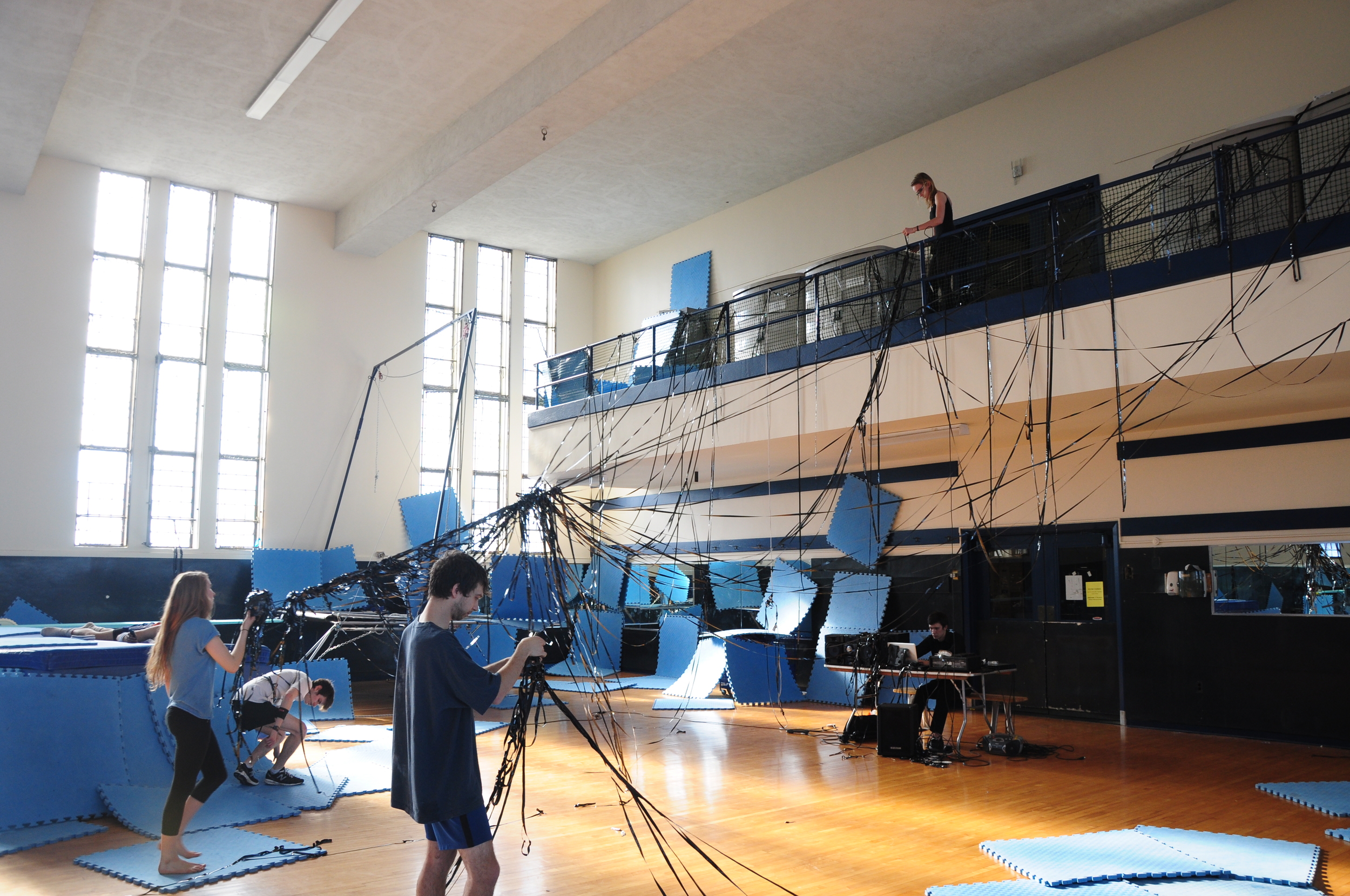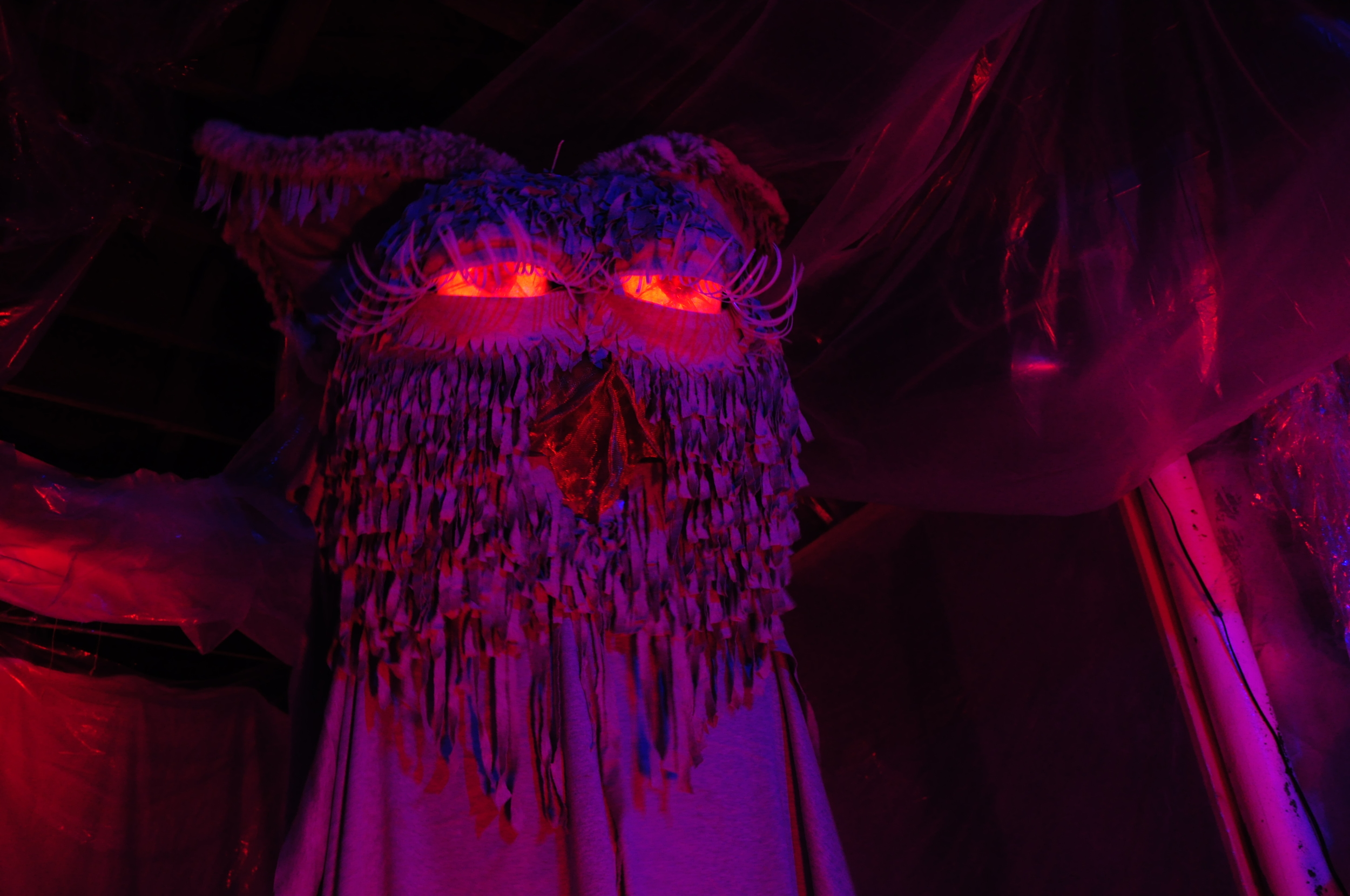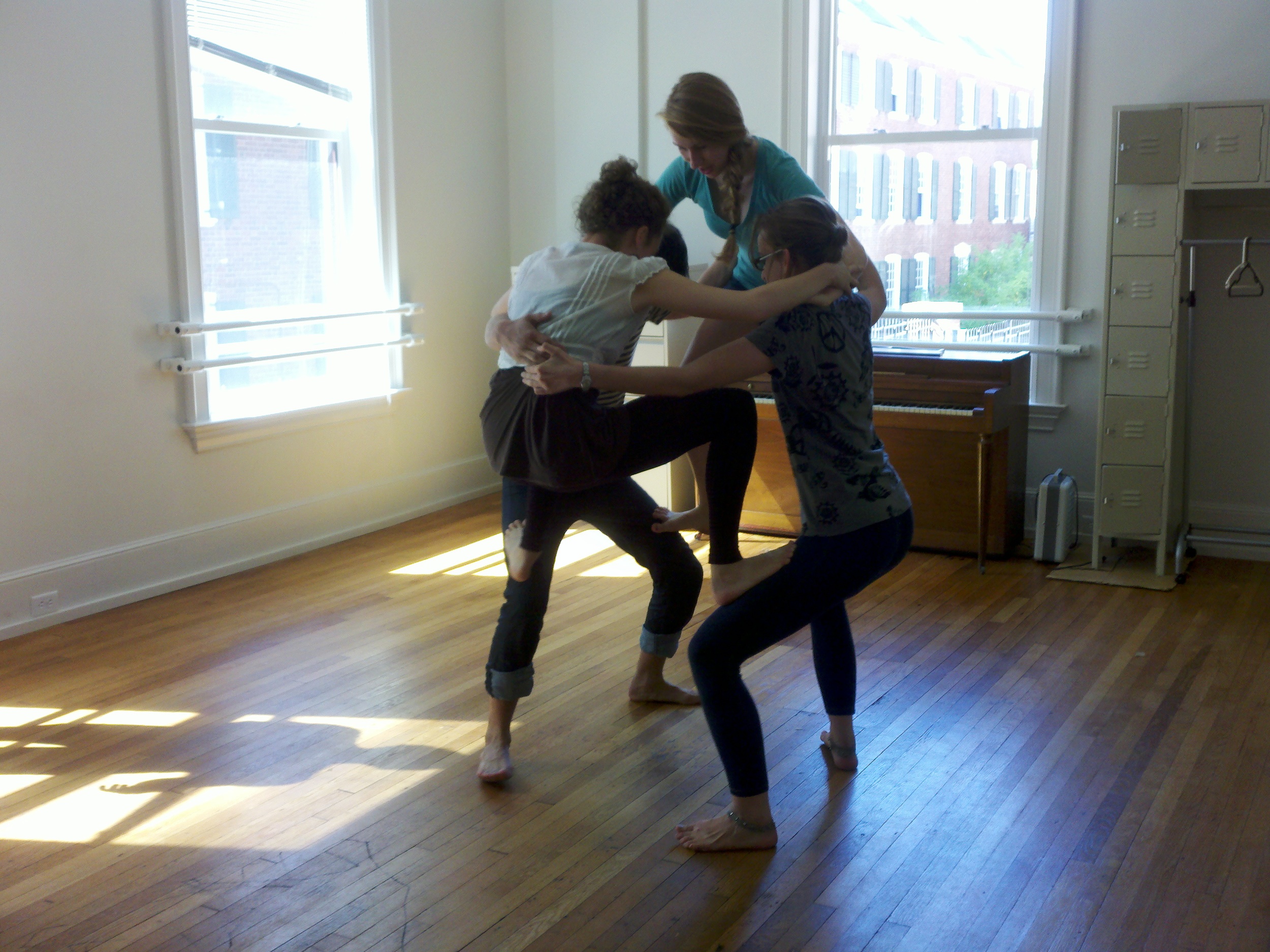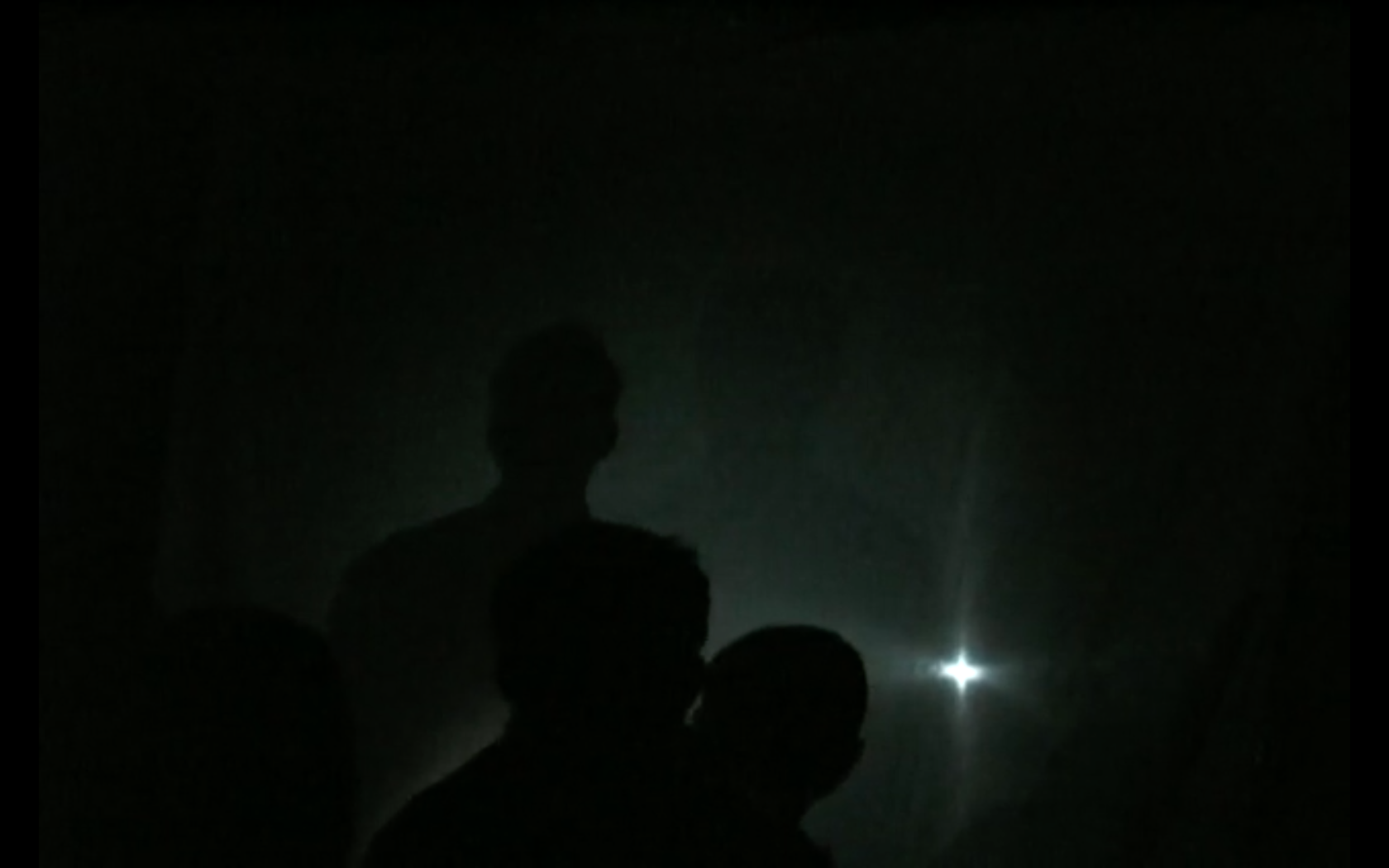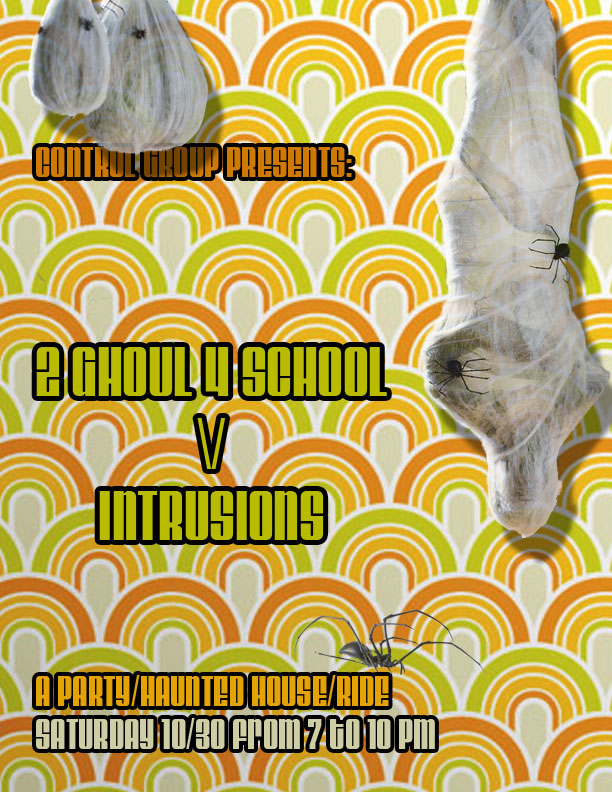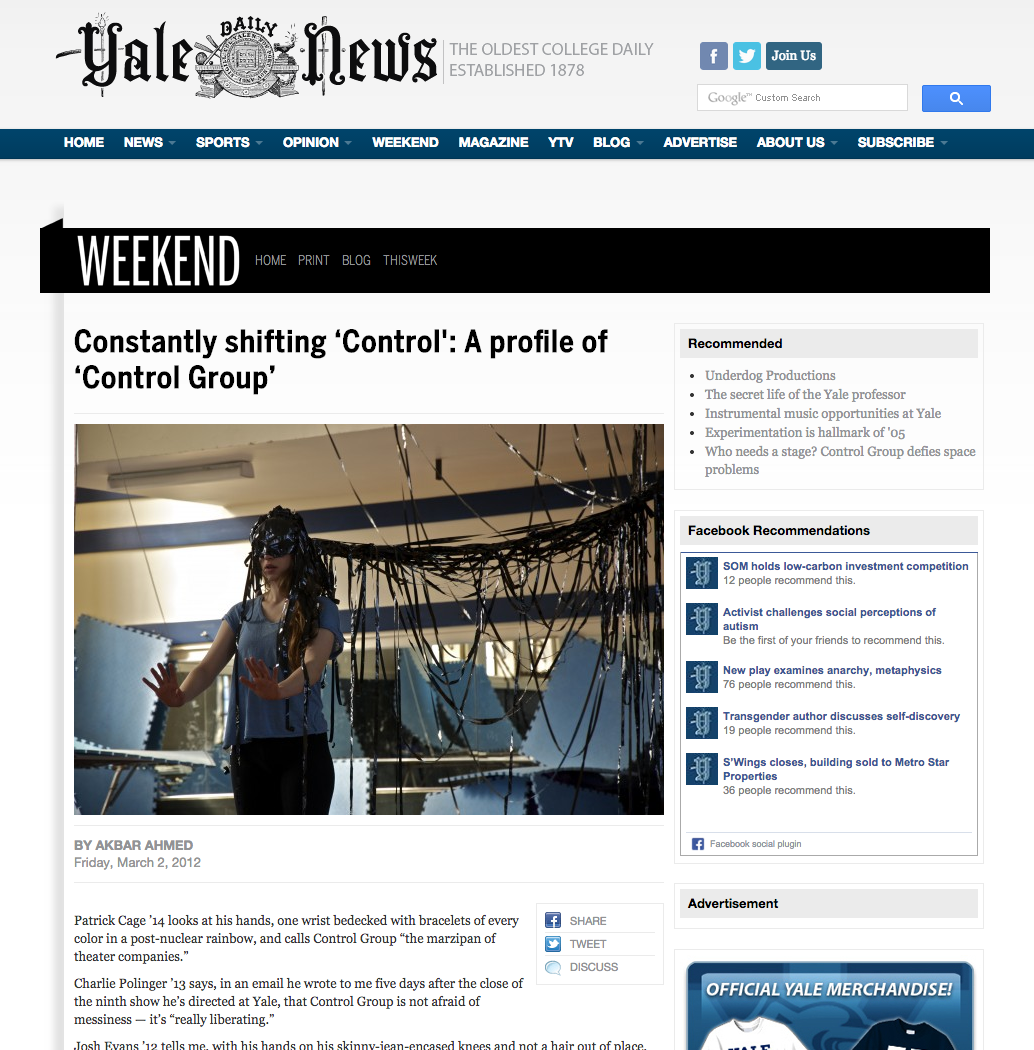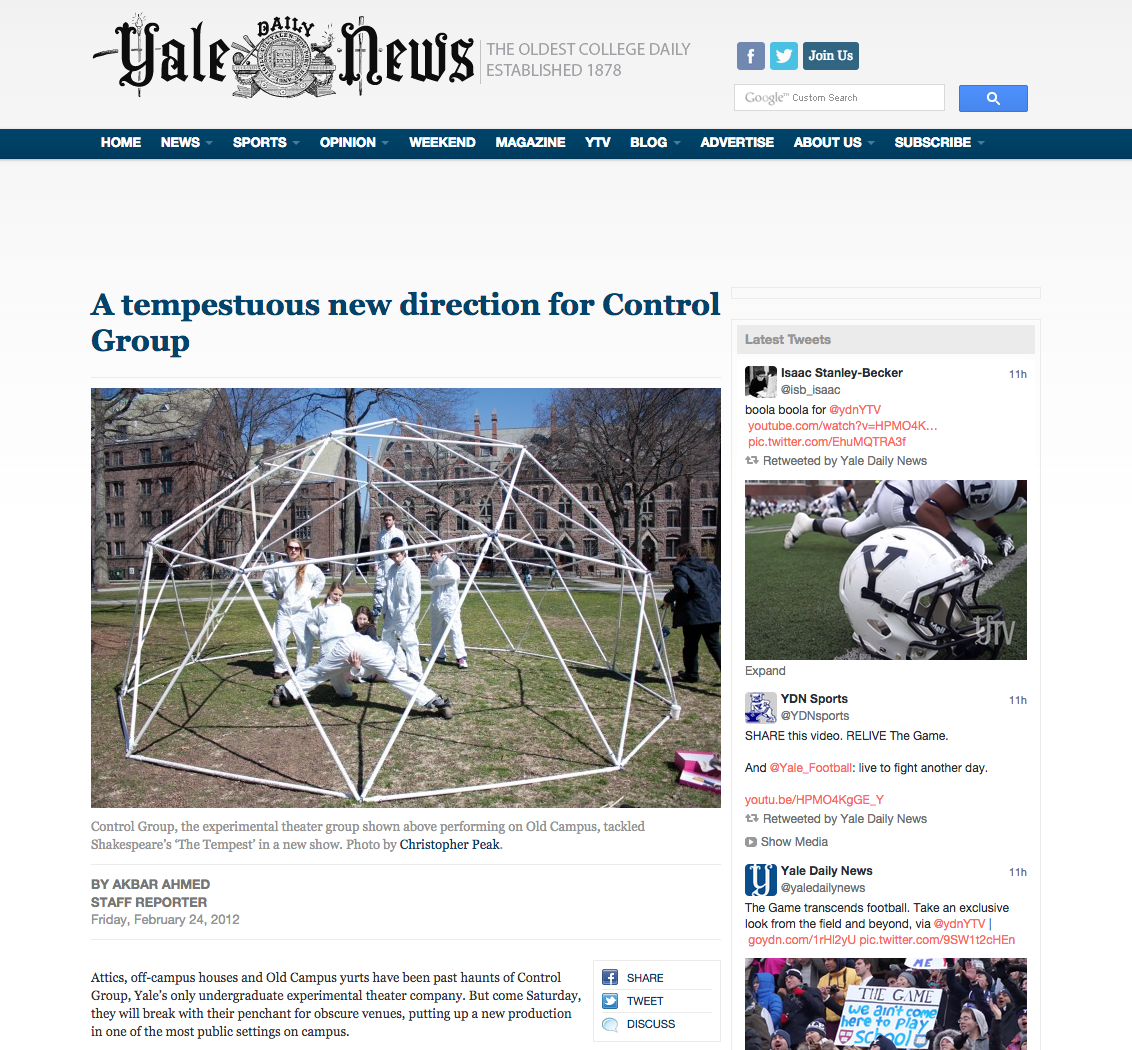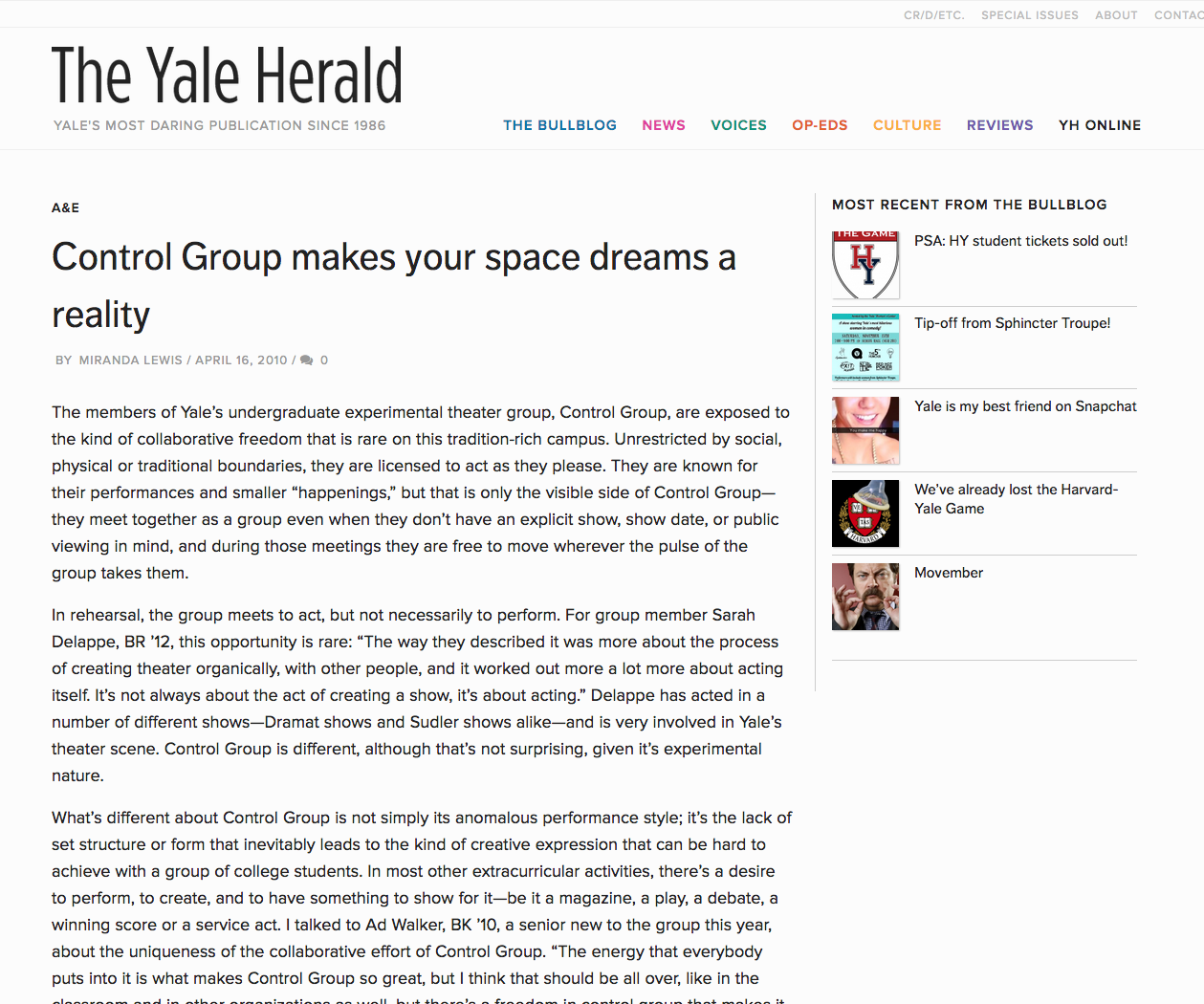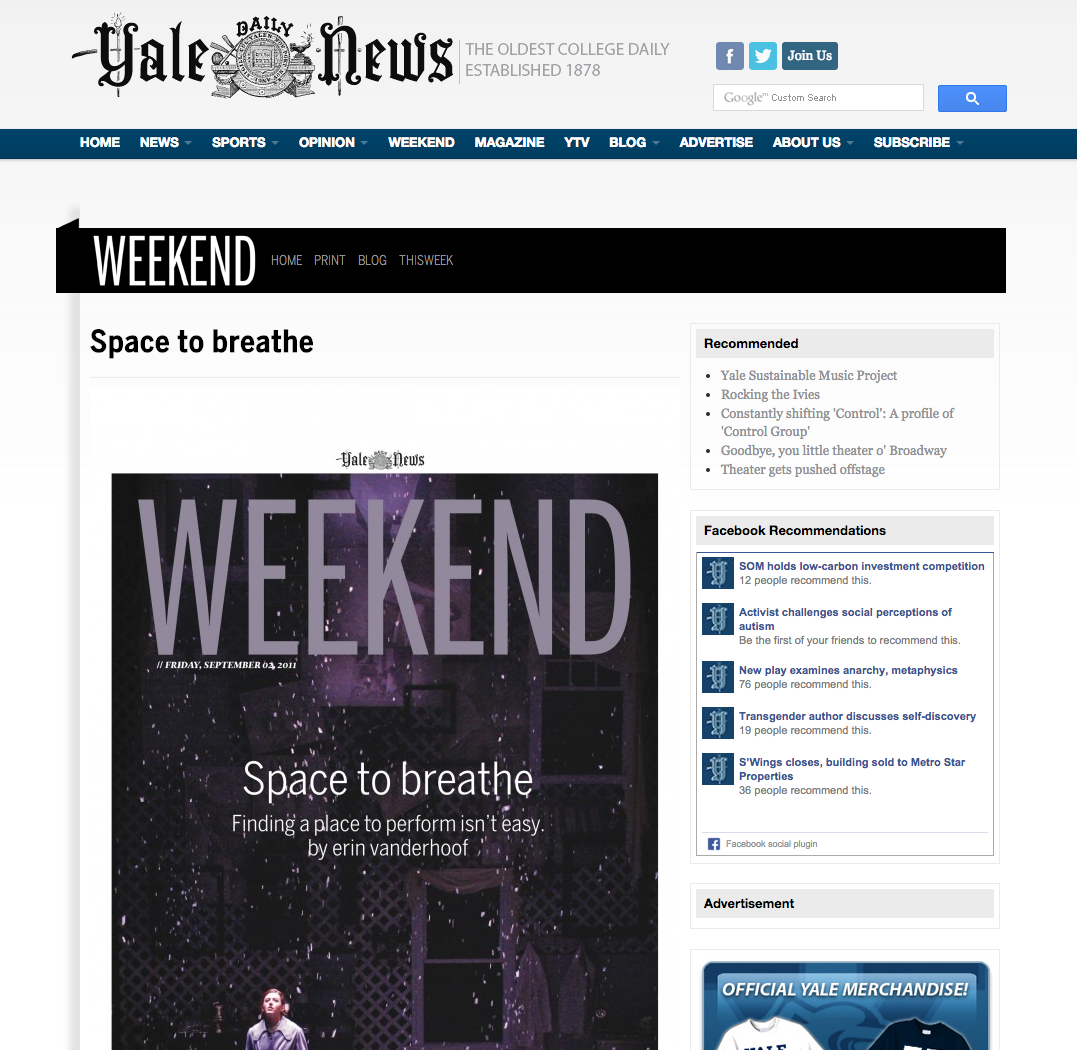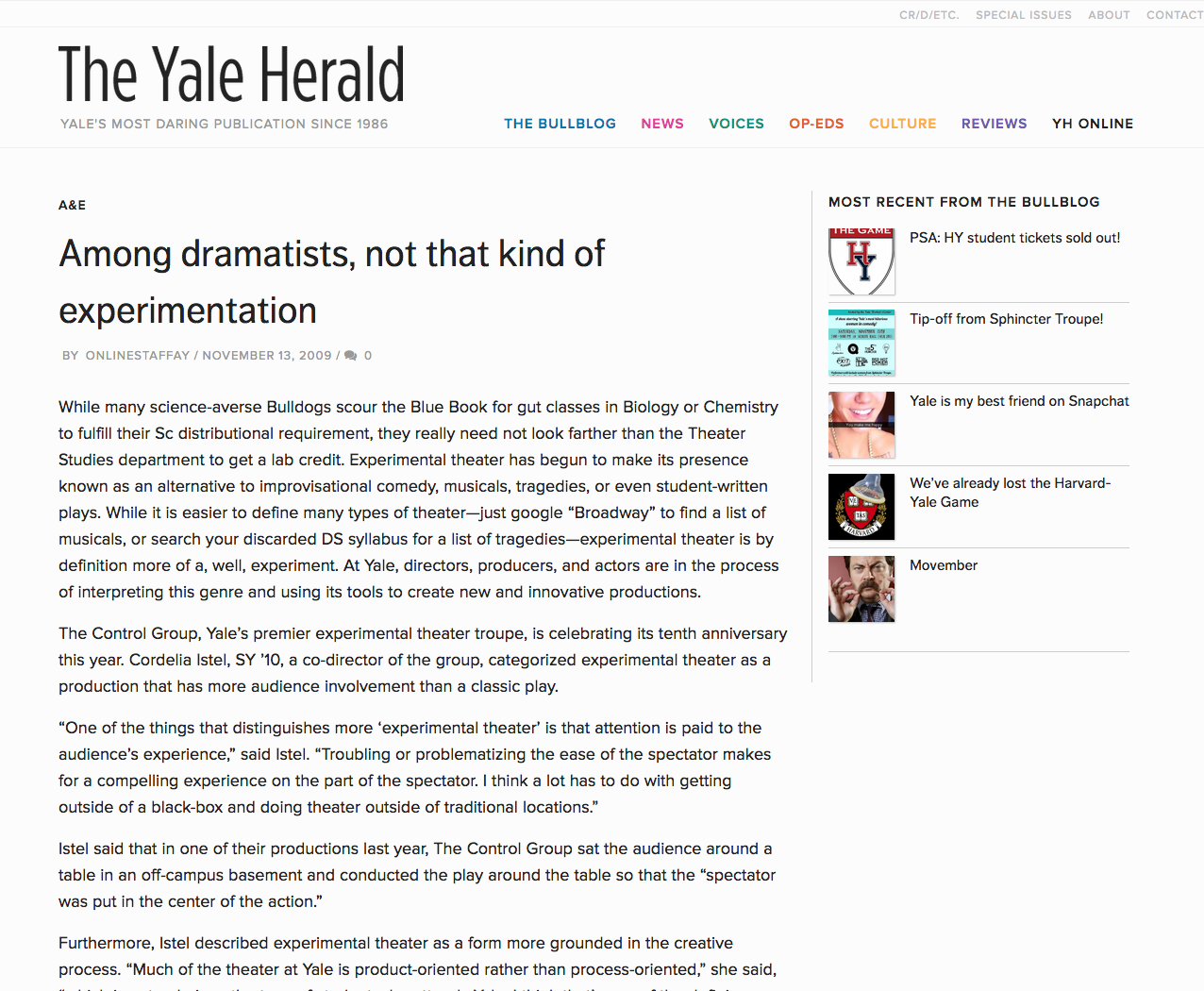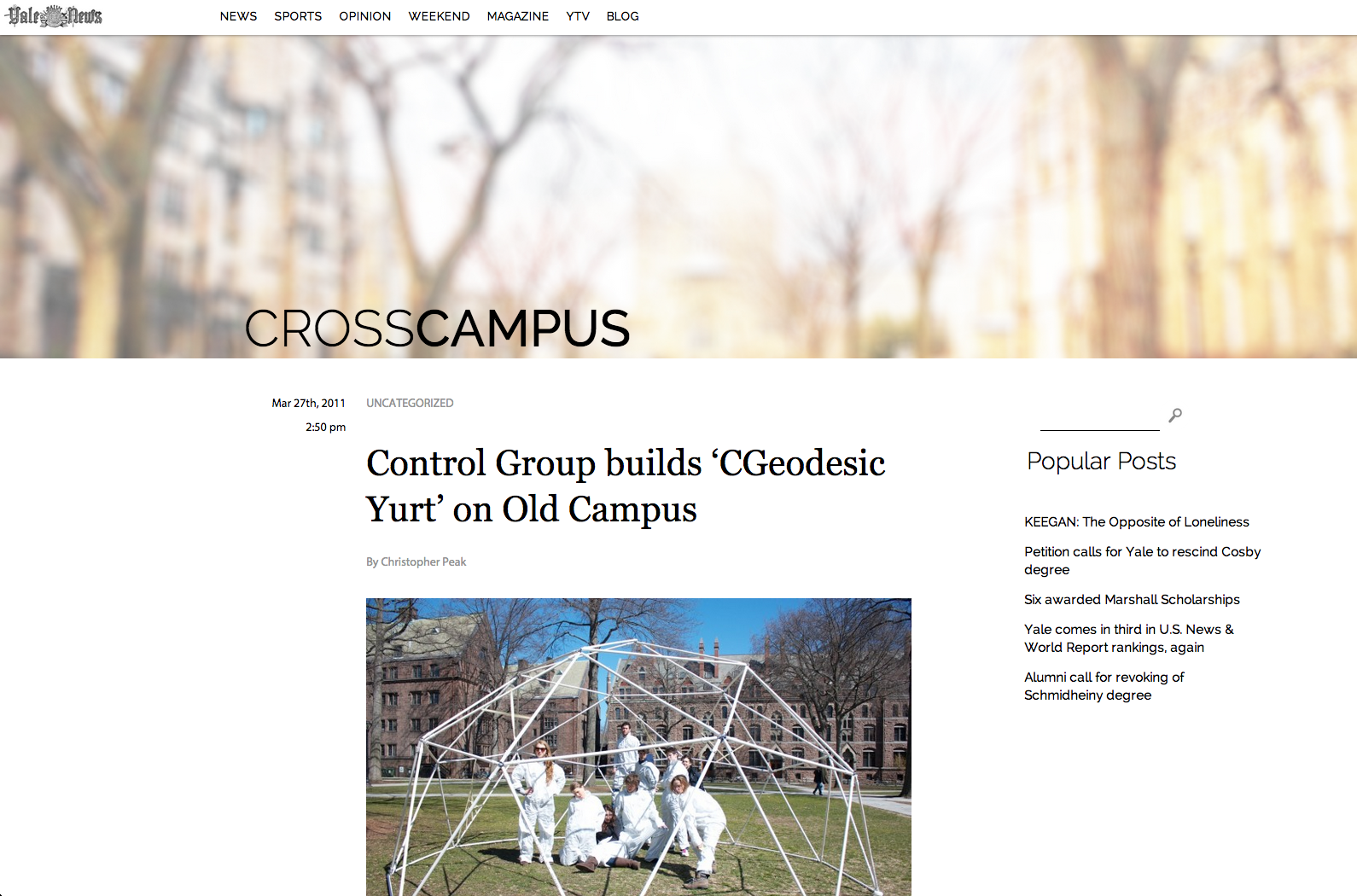Still from "ORIGIN" 2011
CONTROL GROUP (2009 - 2013)
PERFORMANCE:
The Control Group is Yale’s undergraduate experimental theater company. It is an intensely collaborative team of 9-14 designers, writers, performers, musicians, dancers and directors. McCurdy was elected to lead Control Group in 2011. As director, McCurdy led the company in the ideation and realization of work including “Watermelon Sigh” (2011), “ORIGIN” (2011) and “Control Group’s Tempest” (2012).
McCurdy designed and fabricated masks, sets and technical elements for shows she also collaborated in conceiving, writing, promoting, executing and performing.
Control Group relies on an intense, iterative process to devise its new work. This process is enabled by a shared technical core and vocabulary based in Laban, Viewpoints, Grotowski, Suzuki, Muscle & Bone and other traditions drawing from experimental theater, post-modern dance, circus, clown and others. Constraints serve as a central generative principle in production cycles ranging from two weeks to four months. Site specific and processional theater tend to dominate the formal style of the company. Happenings and public interventions are part of the informal style and ongoing process of experimentation of the company.
LEADERSHIP:
McCURDY created the brand identity, logo, website and institutional memory of a prolific but young institution.
Control Group received Yale’s Creative Performing Arts Award in Fall 2011 while under McCurdy's leadership.
FIGURE: Timeline of McCurdy's participation, role and major works while in Control Group
THE TEMPEST (2012)
Directed: Charlotte McCurdy and Alex Kramer
Feb 25-26 2012
Payne Whitney Gymnasium
Live audio manipulation: Nathan Prilliman
An exploration of balancing image and narrative throughout an exercise facility.
In addition to directing and collaborating on the overall development and execution of the piece, Charlotte disassembled dozens of exercise VHS tape to fabricate Prospero's mantle / Miranda's veil. McCurdy designed the promotional material.
ORIGIN (2011)
Directed: Charlotte McCurdy and Sarah Delappe
Nov 3-5, 2011
216 Dwight Street
A synthesis of Darwin's Origin of Species, Campbell's monomyth theory, and stories from childhood.
McCurdy designed and fabricated the Furby Shaman headress using bicycle break cables to allow the wearer to blink the masks eyes. McCurdy fabricated the set and designed the promotional material.
WATERMELON SIGH (2011)
Directed: Charlotte McCurdy and Sarah Delappe
Sept 8-9, 2011
Chapter Room
An initiation right exploring thresholds, memory, and the sound of ripping watermelon.
McCurdy designed and carved masks out of watermelon and designed the promotional material.
Company (2009-2013)
The vast majority of Control Group's work is not public facing or documented. At least five hours a week are dedicated to training and developing compositions for other members of Control Group. These experiments influence the development of larger works but are often too site specific, too difficult to scale to a large audience or too spontaneous, live and therefore complete to develop into full shows.
Other shows:
nightwalk (2013)
Directed: Zach Bell and Eric Sirakian
April 25-27, 2013
"nightwalk" was a processional, interactive and audio based show where the audience downloaded the piece in four separate parts and were guided by action and imagery around New Haven.
Role: Collaborator, played the Woman and the Morph
Process: Beginning with an inquiry into isolation each member of the company recorded an audio-journal every day for ten days while removed from their social world. Company members then edited each others recordings into material for Iterative composition based on imagery, writing prompts and dialogues with Siri.
Apocali/Apoc... (2012)
Directed: Alex Kramer and Charlie Polinger
Dec. 7-8, 2012
The Lynwood Appartments
Roving show that took over five floors of the Lynwood Apartments. An experiment in flat plot and horizontal collaboration, simultaneous worlds prepare for their ends. An a-synchonous audio landscape synchronized every ten minutes through the use of a 36000 Hz pitch in the base track. This allowed for the construction of different levels of abstraction in an otherwise hyper-naturalist landscape that the audience was free to explore at will.











